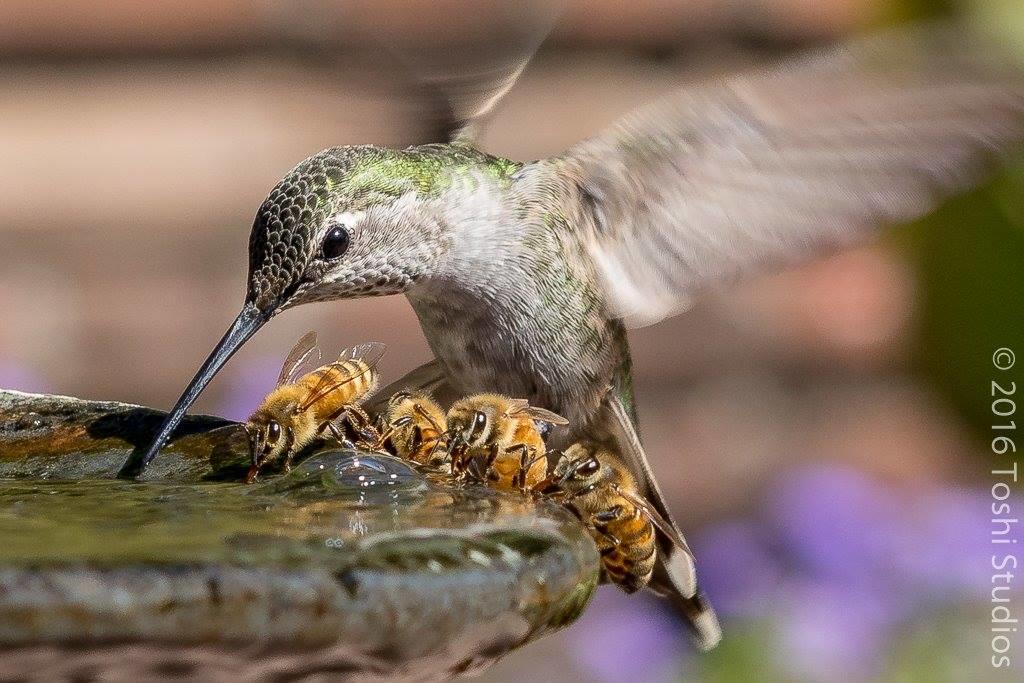
I came into bird photography by an odd route. I started out doing cosplay photography, then started doing landscape photography/nature photography, then started doing wildlife photography. So I came into birding photography from the photography side than the birding side.
This pic was taken on Sep 25 at Filoli in Woodside, California. They have two water fountains in the sunken gardens which attract both birds and bees on hot days.
I have used two camera setups for photographing birds. For the larger birds which are farther away, I use a Sony A7rII with an LA-EA4 adapter and an ancient Minolta 75-300mm lens which I bought on eBay for about $40. I'm a real fan of the older Minolta lenses - they have good color and contrast. For the hummingbirds, I usually use a Sony RX10 model 1.
For this photo, I used a high-end bridge camera with a 24-200mm lens. It seems like an odd choice to most people, but I prefer this camera for a for a few reasons: 1) It has a very quiet shutter. When I shoot hummingbirds I'm usually about three to four feet away, and they're easily startled by loud noises, so this is important; 2) It has a leaf shutter instead of a focal plane shutter, so it's much better for capturing fast motion; 3) The RX10 has a smaller image sensor, one inch, so it has more depth-of-field, which allows me to get more of the scene in focus. In the hummingbird and bees photo, it allowed me to get both the hummingbird and bees in focus for one shot; 4) I prefer a lighter camera. When I shoot hummingbirds, I am usually sitting for at least two hours with the camera less than two inches from my eye most of the time. Hummingbirds don't like sudden movement, so I sit very still, and when a hummingbird shows up, I slowly move the camera to my eye which I cannot do with a heavier camera.
If you are interested in purchasing a print from Toshiyasu, please send us an email.



